A Comprehensive Guide: Benefits of Sheet, Clay, Peel-Off, Gel, Overnight, DIY and Enzyme Masks
So many different types of facial masks-ugh! How do you know which one to use and when?
With so many face mask products available, it’s easy to feel overwhelmed. But don’t worry—I’ve got your back! As a certified facial fitness specialist (and skincare enthusiast), I’ve tried nearly every mask and am here to help you find the perfect one for your needs.

In this article, we’ll dive into 7 popular types of face masks:
- Sheet
- Overnight
- Gel
- Clay
- Peel-off
- DIY At-home
- Enzyme masks
I’ll explain what each mask does, when to use it, and who it’s best for. Plus, I’ll offer tips for creating a mask routine tailored to your skin and lifestyle. Whether you’re dealing with breakouts, dryness, or just want a boost, there’s a mask for you.
how face masks work
Ever wonder how those gooey concoctions actually work their magic on your skin? Let me break it down for you in a way that won’t put you to sleep!
Face masks are like superhero boosters for your skin. They form a barrier that locks in essential ingredients, allowing them to penetrate deeply and work their magic.
Imagine your skin as a sponge—the mask helps it absorb nutrients much more effectively than simply applying a cream or moisturizer.
Using masks regularly is like giving your skin a workout. They help keep your complexion clear and balanced, tackling everything from dryness and dullness to pesky breakouts and clogged pores.
Skincare Routine: When and how to Use
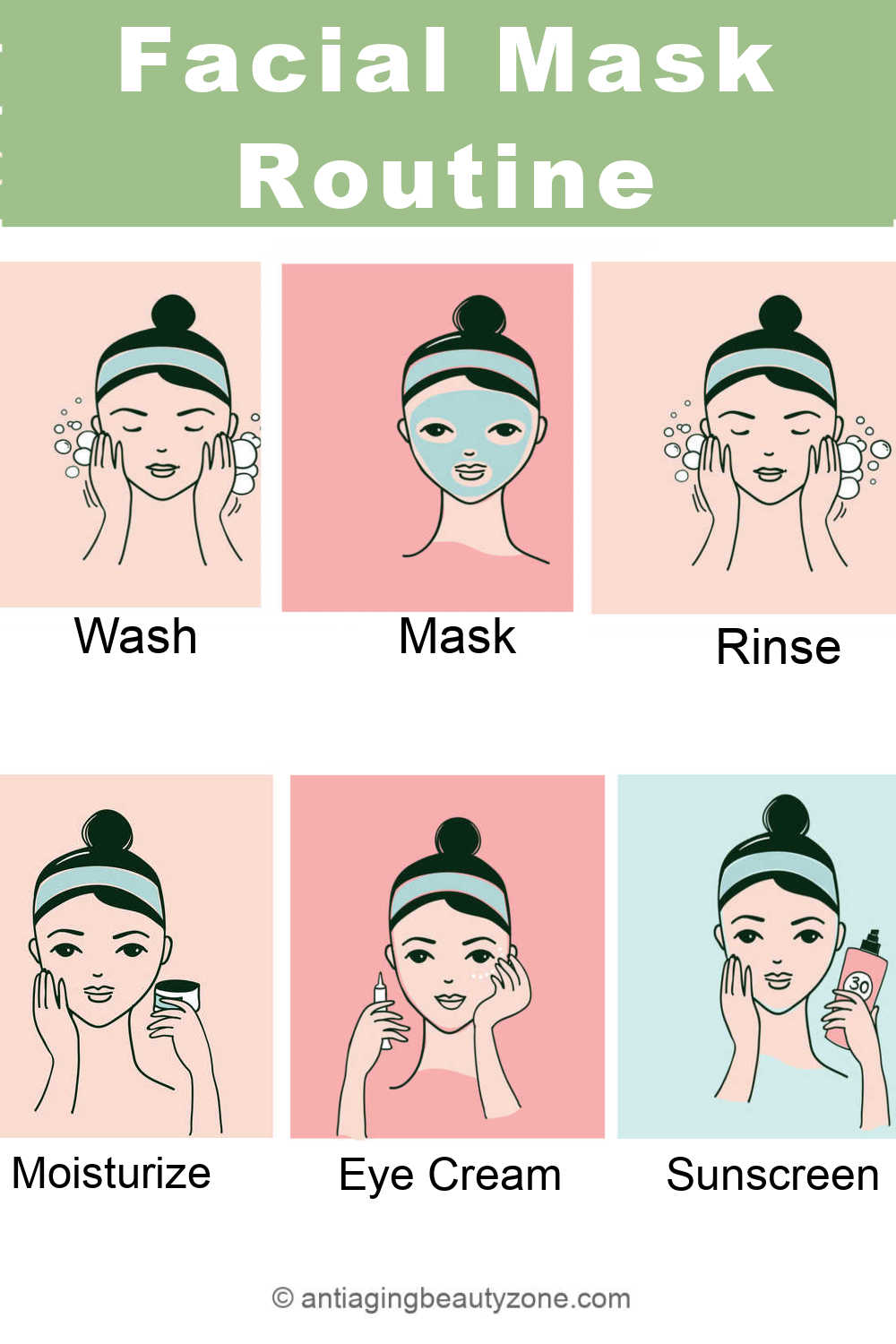
General Application Rule: 1-2 times a week, after cleansing and before applying serums or moisturizers. They can give a temporary glow and calm irritation, making them great for special occasions. Adjust frequency based on your skin’s needs.
Below a list of 7 common masks, arranged from the gentlest to the most intense.
sheet
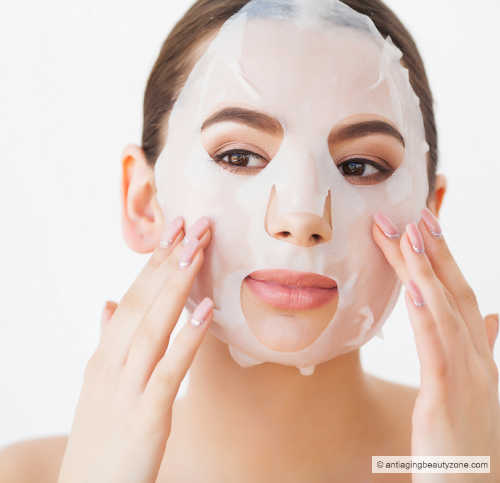
This one-time use, paper mask is pre-soaked in serums to hydrate and brighten. They’re great for a quick moisture boost and a dewy glow. Or before a special occasion.
Use 4-5 times a week. Sheet masks can be used daily after cleansing and can replace serums or moisturizers in your routine. However, you can also use them alongside your regular serums or moisturizers if your skin needs additional hydration or treatment.
Important Note: Before using a sheet mask, check if it contains AHA or BHA. These acids exfoliate and can increase sun sensitivity. Knowing the ingredients helps you avoid potential irritation and sun damage. Not all masks contain these acids, so choose according to your skin type and needs.
overnight
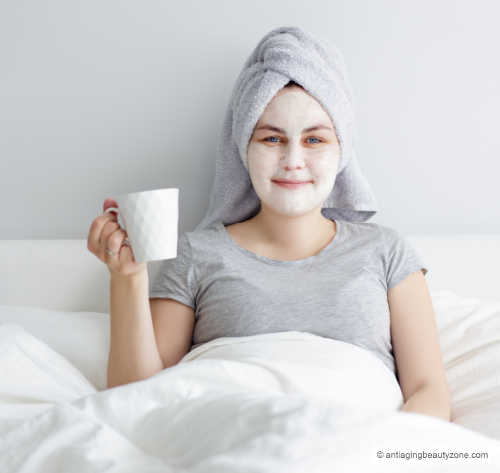
Cream-based overnight masks deeply hydrate and repair your complexion while you sleep, helping to improve texture and reduce dryness. Just be prepared for some sticky pillowcases. Consider placing a towel over your pillows on mask nights!
Use 3-4 times a week as the last step in your evening routine. Apply after cleansing and any treatment serums. Leave it on overnight for deep hydration and repair.
gel
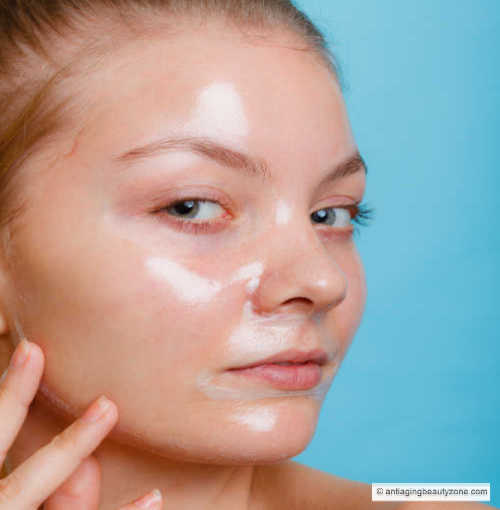
Light gel cooling masks soothe and hydrate the skin, often used to calm irritation or redness and provide a refreshing boost.
Use 1-3 times a week. Apply after cleansing and before moisturizers and treatments. They’re great for a refreshing and calming treatment.
clay
Thick dark green or brown mud like masks help absorb excess oil and draw out impurities, making them ideal for deep cleansing and controlling shine, especially for oily or combination skin.
Use 1-2 times a week. Apply after cleansing and before moisturizers and treatments. Ideal for days when your skin feels congested or oily. Or only use on T- Zone/problem areas.
peel-off
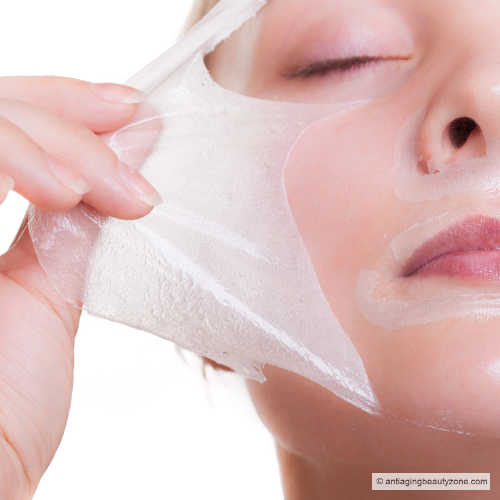
Peel-off masks start as a thick gel that dries and can be peeled or rubbed off. They help remove dead cells and unclog pores. Use them cautiously if you have sensitive skin, as they can be drying.
Use once a week after cleansing and before applying other treatments.
DIY
DIY at-home masks/scrubs let you customize using ingredients like fruits and honey. Some scrubs also double as masks, offering exfoliation and treatment all-in one.
Sugar-based scrubs offer dual benefits: let the scrub sit for a few minutes to break down dead cells, then scrub gently for extra exfoliation before rinsing.
Check out these easy sugar scrub and exotic Korean scrub recipes!
Use 1-2 week, after cleansing and before moisturizers and treatments. Do not leave on longer than 10 – 15 minutes. Always patch-test first.
enzyme

Enzyme masks come in two types: DIY at-home, which can vary in strength and may cause irritation if not used carefully, and store-bought, which are formulated for consistent results.
Both types use natural enzymes to gently exfoliate and brighten the skin. But be careful not to over-exfoliate.
Use once a week after cleansing and before applying moisturizers and serums.
simple routine
Remember, everyone’s skin is unique. This example can be a starting point—feel free to adjust based on your needs.
Weekly Routine Example
- Tuesday: Gel Mask
- Thursday: Enzyme-Based Mask
- Sunday Evening: Overnight Mask
Seasonal Adjustments:
- Winter: Focus on hydrating masks like sheet and night-time masks.
- Summer: Use clay and gel masks to control oil and soothe the skin.
how to choose
Most people with normal skin can use a variety of masks. However, if you have specific concerns like dryness, oiliness, or sensitivity, choosing a mask tailored to those issues will be more effective. Personalizing your mask helps address your unique skin needs.
Oily, Clogged Pores, or Acne-Prone: Look for clay or charcoal masks. These help absorb excess oil and unclog pores.
Dry, Aging, or Sensitive: Sheet, overnight, or honey-based DIY options can provide needed moisture without irritation.
Combination: Try multi-masking – use different masks on different areas of your face. For example, use a clay mask only your T-zone and cream mask around your eyes and lips.
For Brightening: Seek out masks with vitamin C, niacinamide or fruit enzymes, like papaya.
For Signs of Aging: Look for ingredients like AHA, retinol, ceramides or peptides.
Redness& Inflammation: Look for calming ingredients like aloe or chamomile.
Don’t be afraid to mix it up. Your skin’s needs can shift with seasons, stress, or hormones, so adjust your routine accordingly. For example, use a detoxifying clay mask weekly and a hydrating sheet mask on other days.
Finding the right mask may require some trial and error. Start with weekly use and observe how your skin reacts. With patience, you’ll find the best mask for your needs.
Note: And always patch test new products, especially if you have sensitive skin.
Takeaway: Different types of facial masks
Face masks are a fantastic addition to any skincare routine, offering a range of benefits tailored to different skin concerns. From the instant hydration of sheet masks to the deep cleansing power of clay masks, each type has its unique strengths.

